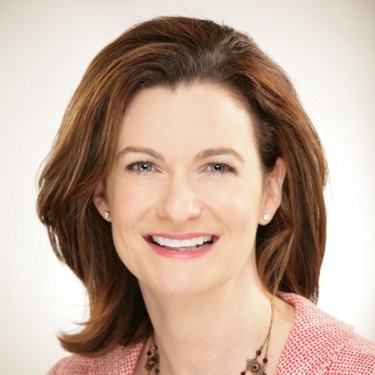The 1960s began just as the 1950s ended. Women were still considered the weaker sex, and society reinforced this ideal.
 The 1950s was the end of an era, and our nation was on the verge of a precipice. The myth of the ideal woman was prominent in the 1950s, and the M.R.S. was the most sought-after degree in college. It was a unique time economically, with opportunities for young couples to buy houses and raise their children on one salary. Marriage rates were high, and birth rates had increased. More than 95% of women who came of age in the 1950s married, more than at any other time.
The 1950s was the end of an era, and our nation was on the verge of a precipice. The myth of the ideal woman was prominent in the 1950s, and the M.R.S. was the most sought-after degree in college. It was a unique time economically, with opportunities for young couples to buy houses and raise their children on one salary. Marriage rates were high, and birth rates had increased. More than 95% of women who came of age in the 1950s married, more than at any other time.
➡️➡️Read More_Women In the Workforce: 05 The Rise of Female Empowerment
At the same time, the number of women completing higher education decreased. More women were dropping out early to marry, and degrees were forgotten to begin a family. As the 1950s ended, the country was in a prosperous place but on the verge of a coming change.
It is important to note that the changing trends this blog series addresses primarily impacted white, middle-class women. Women of color and women in poverty have had very different experiences. I highlight choices that women have made as well as movements and political actions that women have inspired. I recognize the privilege that one has in the ability to choose careers or family. I also recognize the privilege of political action. When one is just trying to survive and feed their family, they are unlikely to start a feminist movement.
 Jobs Defined by Gender. The 1960s began just as the ‘50s ended. Women were still considered the weaker sex, and society reinforced this ideal. Help wanted ads had specific female sections advertising “pink collar” jobs, such as clerical, nursing, teaching, and housekeeping. The few women who became professionals were defined by their gender, such as a “female physician” or a “lady lawyer.” Employers had different salaries for women as a policy. The assumption was still that women who worked were either single and living with parents or married and just wanted some “pin” money. The reality was that by 1960, there were as many women working as at the peak of World War II, and the majority were married. Thirty percent of American wives were working, including 40% with young children.
Jobs Defined by Gender. The 1960s began just as the ‘50s ended. Women were still considered the weaker sex, and society reinforced this ideal. Help wanted ads had specific female sections advertising “pink collar” jobs, such as clerical, nursing, teaching, and housekeeping. The few women who became professionals were defined by their gender, such as a “female physician” or a “lady lawyer.” Employers had different salaries for women as a policy. The assumption was still that women who worked were either single and living with parents or married and just wanted some “pin” money. The reality was that by 1960, there were as many women working as at the peak of World War II, and the majority were married. Thirty percent of American wives were working, including 40% with young children.
➡️➡️Read More: Women in the Workforce: 06_Stay Home or Be Paid Less
The Myth of the Ideal Woman Persisted. Yet, the ideal was still to stay at home and allow the husband to be the breadwinner. There was a sense of glory in that version of life and a message that continued to be shared with young girls. Author Gail Collins recounts a story in her book, When Everything Changed: The Amazing Journey of American Women from 1960 to the Present, about an auditorium of working-class high school students. The girls were asked if they expected to have a home and a family, and all the girls raised their hands. Then they were asked how many expected to work, and only a few raised their hands. The last question was how many of their mothers worked, and again, all of the girls raised their hands.
The myth of the stay-at-home wife persisted whether it was attainable or not. Television and media contributed to the myth. In 1950, only 9% of U.S. households had a television, while in 1960, 90% had one. The women that were seen on the shows and commercials were mainly in the kitchen, and the message to girls was to let boys win. Cowboy shows were very popular in the early ‘60s, and the role of women was primarily to be kidnapped or caught in a natural disaster so that the true heroes could come to the rescue.
Limited Options for Unmarried College Graduates. Women who graduated from college without a ring on their fingers were candidates for short-term jobs as opposed to careers.
 A flight attendant was a perfect path for many young women as they could have an adventure by being a hostess in the air. Women were prohibited from being pilots, and many flights were considered “executive flights,” which barred female passengers as well.
A flight attendant was a perfect path for many young women as they could have an adventure by being a hostess in the air. Women were prohibited from being pilots, and many flights were considered “executive flights,” which barred female passengers as well.
The airlines looked to hire attractive, single women to serve drinks and meals to their male passengers. Salaries were low, and flight attendants were subjected to regular weigh-ins and measurements. African American women were not welcome in the sky, with one airline requiring that hands must be “soft and white.” The average tenure of most flight attendants was 18 months because of the rule that required women to quit if married. Supervisors even read the newspaper announcements to ensure that no one broke this rule.
Few Women Entered the Professional World. In 1960, 6% of doctors were women, 3% lawyers, and less than 1% engineers. They were mainly in the low-profile specialties such as pediatricians, real estate law, and journalists writing for the women’s page. It was perfectly legal to discriminate on the basis of sex. If women did get a job in a more male-dominated space, there was very little chance of promotion. Conventional wisdom held that women preferred to be in supportive roles for men.
In the 1960s, Harvard Business Review produced a report on women in management and concluded that “there is scarcely anything to study” since there were so few women in that role. For the women who did succeed in entering the professional world, it was very difficult. Business was often conducted in men’s clubs, gyms, and lounges, and women were not welcome.
➡️➡️Read More: 07_Women in the Workforce: A Woman's Place
 Financially, Women Had Zero Power. All credit was in the husband’s name. Loans were based on the husband’s wages, even if the wife worked as well. If the wife was under 28,her salary was not relevant in calculating a loan because it was assumed she would soon be pregnant. Banks would consider half of her income if she was in her 30s and her full salary if she was over 40 or could prove that she had been sterilized.
Financially, Women Had Zero Power. All credit was in the husband’s name. Loans were based on the husband’s wages, even if the wife worked as well. If the wife was under 28,her salary was not relevant in calculating a loan because it was assumed she would soon be pregnant. Banks would consider half of her income if she was in her 30s and her full salary if she was over 40 or could prove that she had been sterilized.
Divorced women had an extremely difficult time and had to get their fathers or ex-husbands to co-sign loans. It was widely believed that if a woman could not keep her marriage together, how could she pay her bills properly.
While this all sounds terrifying to us in 2022, very few people in 1960 questioned it. Collins recounts a story of Nora Ephron applying for a job at Newsweek after college. When told that women don’t become writers here, Ephron said it never crossed her mind to say, “how dare you.” This was just an example of social tradition. In fact, George Gallup found that only 19% of married women and 29% of single women recognized that there was sex discrimination in the workplace.
Women in the Workforce: We Can Do It!
Whether married or single, with children or not, working part-time, full-time, or even two jobs, as a stay-at-home mom or a community volunteer, American women can do it! Throughout history, American women always have. And I am so proud we do! Over the next few months, I will explore how topics about women in the workforce from the early 1900s until the present. Also, I want to note the changing trends of women in the workforce that this series contemplates will focus on white, middle-class women. Women of color have had very different experiences, and their work lives have been defined by racism, sexism, and financial necessity. I have pointed this out when possible, but please keep in mind that this series is not a complete picture of all women.
This is Part 8 of a 14-part series, Women in the Workforce: We Can Do It!, which explores topics related to the history, challenges, and accomplishments of working women in America. Topics to date include: 01_Women in the Workforce: We Can Do It!, 02_The War Opens the Doors for Working Women, 03_Rise of Jobs, Rise of Inequality, 04_Working Women and The Great Depression, 05 The Rise of Female Empowerment, and 06_Stay Home or Be Paid Less and 07_A Woman's Place
Propel HR President Lee Yarborough
 “My father, Braxton Cutchin, and I founded the company in 1996. After being in the PEO and HR world for 25 years, I have experienced firsthand the value we can provide to both the clients and the employees. It is truly a win for all parties. I’m proud to have helped establish Propel HR as an industry forerunner in the Southeast. There is nothing I love more than receiving phone calls from clients who seek my advice as a trusted advisor. This is a business where I feel that I can help others, and that is important to my own value.”
“My father, Braxton Cutchin, and I founded the company in 1996. After being in the PEO and HR world for 25 years, I have experienced firsthand the value we can provide to both the clients and the employees. It is truly a win for all parties. I’m proud to have helped establish Propel HR as an industry forerunner in the Southeast. There is nothing I love more than receiving phone calls from clients who seek my advice as a trusted advisor. This is a business where I feel that I can help others, and that is important to my own value.”
-- Lee Yarborough, President, Propel HR
Active in many professional and community organizations, Lee recently served as Chair of the Board of Directors of the National Association of Professional Employer Organizations (NAPEO). As NAPEO Chair, Lee focused on diversity and initiatives to deepen member relations. Under her leadership, she formed Women in NAPEO (WIN), a networking group designed to engage, empower, and encourage women working in the PEO industry. On the local level, Lee also served as the Chair of NAPEO’s Carolinas Leadership Council for more than a decade. In 2015, she was named a Fellow of the eleventh class of the Liberty Fellowship Program and a member of the Aspen Global Leadership Network.
An advocate for public education, Lee has served on the executive board as Chair of Public Education Partners and is the founder and director of Read Up Greenville, a young adult and middle grades book festival in downtown Greenville, SC.
When she breaks from board meetings, client visits, and networking, most likely, you will find Lee reading, camping, or spending time with her family. She also enjoys volunteering at her church and staying involved with her children's schools.
 About Propel HR. Propel HR is an IRS-certified PEO that has been a leading provider of human resources and payroll solutions for more than 25 years. Propel partners with small to midsized businesses to manage payroll, employee benefits, compliance and risks, and other HR functions in a way that maximizes efficiency and reduces costs. Visit our new website, www.propelhr.com.
About Propel HR. Propel HR is an IRS-certified PEO that has been a leading provider of human resources and payroll solutions for more than 25 years. Propel partners with small to midsized businesses to manage payroll, employee benefits, compliance and risks, and other HR functions in a way that maximizes efficiency and reduces costs. Visit our new website, www.propelhr.com.









